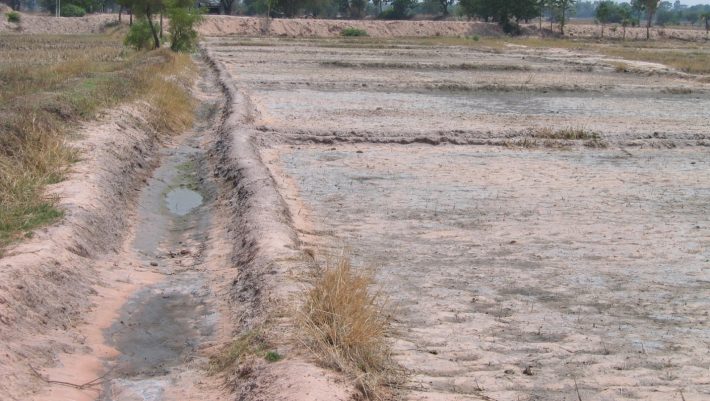Promising management strategies to improve crop sustainability and to amend soil salinity
- From
-
Published on
04.04.23
- Impact Area

The FAO estimated that over 6% of the world’s land area and about 20% of irrigated croplands are affected by salinity. Strategic and adaptive research on the incorporation of modern technologies, salt-tolerant varieties, biochar, plant growth regulators, and nanoparticles will be critical in amending salt-affected soil and increasing the productivity of degraded land.
Plants are encountering several environmental adversities caused both by living and non-living factors, with the former known as biotic stress and the latter as abiotic stress. Various stress factors have been found in almost all environments and climatic conditions, but salinity stress seen in plants growing under arid and semi-arid conditions should be given priority. Salinity stress is a form of abiotic stress, which is caused due to salt accumulation in the root zones of plants, making them physiologically flaccid and unfit for production.
Currently, approximately 1.1 × 109 ha of land is salt-affected globally, and saline soils are increasing at an alarming rate of 1.5 million hectares annually. The FAO estimated that over 6% of the world’s land area and about 20% of irrigated croplands are affected by salinity.
Nearly 95% of the total degraded land in India (7.5 million hectares) is accounted for by soil salinity/alkalinity, especially found in the states in the northwestern part (Western Uttar Pradesh, Punjab, Haryana, northern Rajasthan, and Delhi), the central part (Gujarat, central and western Rajasthan, Maharashtra, and Madhya Pradesh), and the northeastern part (West Bengal, central and eastern Uttar Pradesh, Bihar, and eastern Odisha) of India.sea-level rise will cause the country’s landscape to become “sicker.”
Related news
-

Scaling nutrition impact: Schools serve up High-Iron Beans
The Alliance of Bioversity International and the International Center for Tropical Agriculture (CIAT)03.07.25-
Nutrition, health & food security
Iron-rich beans can be integrated into consumers’ diets to enhance nutrition and cognitive functio…
Read more -
-

Shaping policy changes for a sustainable cropping system in Uttar Pradesh, India
International Rice Research Institute (IRRI)03.07.25-
Food security
by Dr. Proloy Deb and Dr. Swatantra Dubey The Central Plain region of Uttar Pradesh…
Read more -
-

Taste of progress: High-iron bean nutritional formulation draws international acclaim
The Alliance of Bioversity International and the International Center for Tropical Agriculture (CIAT)02.07.25-
Nutrition, health & food security
When Samuel Uwihanganye - a passionate advocate for children’s nutrition and community empowerment…
Read more -
